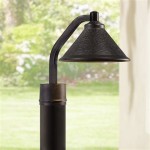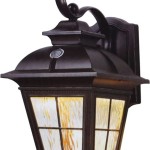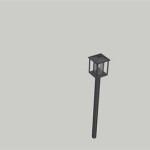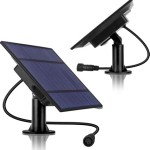How to Plant Herbs in an Outdoor Planter
Outdoor planters provide a convenient and attractive way to cultivate herbs in a variety of settings, from balconies and patios to gardens and courtyards. Planting herbs in planters offers several advantages, including portability, aesthetic appeal, and the ability to control the soil and growing conditions. This guide provides a step-by-step approach to successfully planting herbs in an outdoor planter.
Choose the Right Planter and Location
The selection of an appropriate planter and location is crucial for the successful growth of herbs. Consider factors such as size, material, drainage, and sunlight exposure when making your choice.
Planter size should be large enough to accommodate the root system of the herbs and allow for proper drainage. A planter with a diameter of at least 12 inches is generally recommended for most herbs. The material of the planter should be durable and appropriate for outdoor use. Terracotta, plastic, and metal planters are popular options. Terracotta planters are porous and allow for good drainage, while plastic planters are lightweight and durable. Metal planters are typically more decorative, but may require additional protection from rust.
Drainage is crucial for the health of herbs, as excessive moisture can lead to root rot. Ensure that the planter has drainage holes at the bottom to allow excess water to escape. A layer of gravel or pebbles can be placed at the bottom of the planter to improve drainage. The location of the planter should receive adequate sunlight. Most herbs require at least six hours of direct sunlight per day. Consider the orientation of the planter and the amount of sunlight it receives throughout the day. If the location does not receive enough direct sunlight, you may need to supplement with artificial light.
Prepare the Planter and Soil
Proper preparation of the planter and soil is essential for creating a healthy environment for herbs. This involves cleaning the planter, amending the soil, and adding a layer of mulch.
Clean the planter thoroughly to remove any dirt or debris. Wash it with soap and water, rinse well, and allow it to dry completely. Amend the soil with compost or other organic matter to improve drainage, aeration, and nutrient content. A good potting mix specifically formulated for herbs is recommended. Fill the planter almost to the top with amended soil, leaving about an inch of space at the rim. Add a layer of mulch, such as wood chips or straw, to the top of the soil to help retain moisture, suppress weeds, and regulate soil temperature.
Plant the Herbs
Once the planter and soil are prepared, you can begin planting the herbs. The planting process involves making holes for the herb starts, carefully installing them in the holes, and watering them thoroughly.
Make a hole in the soil for each herb start. The hole should be deep enough to accommodate the root ball of the herb start and wide enough to allow for proper root growth. Gently remove the herb start from its container and loosen the roots. Place the herb start in the hole with the top of the root ball level with the soil surface. Fill the hole with amended soil and gently pat it down around the base of the herb. Water the herbs thoroughly after planting to help them settle into their new home.
Care for Your Herbs
After planting, regular care is essential for the healthy growth of herbs. This includes watering, fertilizing, and pruning.
Water the herbs regularly, especially during hot and dry weather. The soil should be kept moist but not soggy. Check the soil moisture by sticking your finger into the soil. If the top inch of soil feels dry, water the herbs. Fertilize the herbs every few weeks with a balanced fertilizer formulated for herbs. Follow the directions on the fertilizer package. Prune the herbs regularly to promote growth, maintain shape, and prevent them from becoming leggy. Remove any dead or diseased leaves or stems. Regular pruning also encourages the production of new growth and flavor.
Common Herb Choices for Outdoor Planters
There are many different herbs that can be successfully cultivated in outdoor planters. Here are a few popular choices known for their culinary versatility and adaptability to container gardening.
Basil, a popular herb used in Italian cuisine, thrives in sunny locations and prefers well-drained soil. Mint, a versatile herb known for its refreshing flavor, is known to spread vigorously so it's best to contain it in a planter or choose a variety that spreads less. Rosemary, a hardy herb known for its fragrant leaves and culinary uses, prefers full sun and well-drained soil. Sage, a flavorful herb often used in Mediterranean cuisine, is drought-tolerant and thrives in full sun.

The 7 Best Herbs For Container Gardening

How To Grow Herbs In Containers Gardener S Path

The 7 Best Herbs For Container Gardening

Ideas For Growing Herbs In Pots Garden Gate

How To Grow Herbs In Containers Gardener S Path

How To Build A Raised Herb Planter Little Terraced House

How To Create A Herb Garden Bbc Gardeners World

How To Grow Herbs In Containers Gardener S Path

The Ultimate Guide To Growing Herbs In Pots Mudbrick Herb Cottage

Herb Garden Design Ideas And Growing Tips
Related Posts







